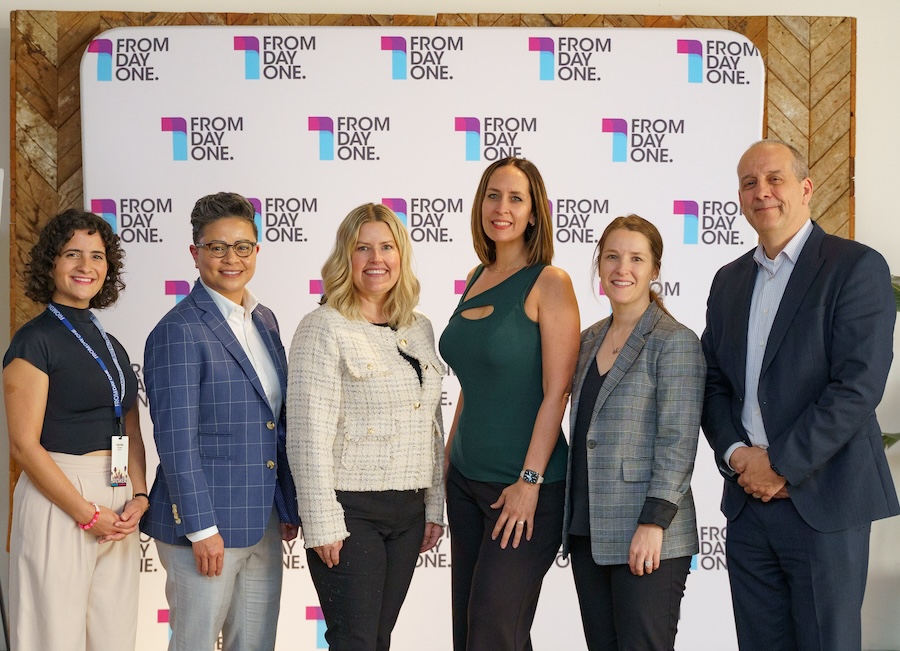Helping Managers and Workers Cope With Transformation


Over the last seven years, Samantha Khoury, vice president of human resources for the Los Angeles Lakers, has seen several changes in management, including four different head coaches. In times of change, Khoury advises transparency to maintain success and satisfaction among employees.
During an executive panel at From Day One’s LA conference, leaders discussed the many ways companies can support the mental health of employees, guide them through challenges with company changes and ensure all voices are heard.
Making Your Employees Feel Seen
In order to gauge feedback within a company, many employers will opt for a survey, but what makes the impact is for employees to hear back and see their survey responses being considered to make changes in the workplace.
“It’s easy to roll out a survey. What’s important is what you do with the results, how you measure them, and how you communicate them with the workforce so that you can show you heard them loud and clear,” said Sarah Jingco, vice president of human resources for Securitas.
Vulnerability and honesty from leadership can make a large impact on employee satisfaction and positivity. Creating a consistent feedback loop between management and employees can help build a culture where people feel safe and welcome to share their thoughts and feelings, says Carrie Bergen, senior strategist at Lyra Health.
Especially in times of change, whether it’s a layoff or management shift, maintaining a strong sense of leadership as an employer is important for companies to move forward through change, despite leaders themselves carrying a sense of uncertainty.
In these situations, leadership can be displayed through communication, offering support and opening up spaces for questions and concerns, said Jingco. Employees have to feel like they can trust their leadership and know that they are being prioritized by the company, says Laura Bartus, head of learning at Humana CenterWell Pharmacy.
“I think people are craving leaders of fabric, leaders with high integrity, leaders that can lead from the front, lead in plain sight,” said Jeff Williams, president and CEO of Aptia.
Providing Mental Health Support
Changes can also bring on increased mental health impacts, but how can managers recognize and respond to employee struggles while they manage their own well being?

Bergen emphasizes that providing managers with training is a critical aspect to helping leaders recognize mental health issues and taking the appropriate action to help their employees. Even for managers to communicate to employees that they recognize their struggles and open the door to mental health support for when they want it can make an impact.
Leaders play a large role in maintaining a sense of stability for employees during changes, but it’s also important to remind leaders that “it’s okay to not always be the strong one,” said Bartus. “It’s okay to seek help and find resources, because often we feel like we have to be invulnerable.”
For managers and employees, acknowledging this vulnerability of not always being strong can be important to the long term well being of workers.
“Sometimes you have to tell people to take a break,” said Jingco.”I always tell my employees, ‘You’re not a machine. You know you’re not gonna break down and I can just fix you and you’re back to work. It doesn’t work that way.’”
From the pandemic, many companies have become remote, but some executives are calling for employees to return to the office. Jingco recognizes that it varies among employees whether they prefer remote or in person work, but the real key performance indicator isn’t about being in the office, it’s about getting the job done.
Hardships During Layoffs
Companies nationwide have been announcing major layoffs over the years and during these transitions companies put a strong focus on rightfully taking care of the people being let go. In times where laid off employees are being supported, remaining workers who are left to pick up the company’s work might be seen as an afterthought.
Despite how much attention is given to people being laid off, Bartus says it’s also crucial for companies to hold space for remaining employees to express their fears, nerves and to provide feedback. “I need to let them know we’re not going to do 100% of what we used to do with 20% fewer people. Let's talk about prioritizing what we don't do anymore, and talk about making what we do now more efficient, because that's gonna be their biggest fear,” Bartus said.
Maintaining a healthy relationship with remaining employees is important to move forward during major changes like layoffs. Especially when workload and responsibilities might be shifting, companies should be setting a clear vision of future expectations for employees to understand.
At the Lakers, Khoury says that layoffs are driven by changes in investment and moving towards what would benefit the company in the future. With new visions on how the company will progress, leadership will need to deliver the hard truth and recognize that not everyone will find themselves in those changes.
“Getting to the heart of the matter on [changes] and making sure you have a group that’s aligned on the purpose, the mission and being true to that mission is vital as well because you can’t have this sense of active dissent of people who can't get past it either,” said Khoury.
Finding the best avenue to addressing change is not a direct road. Companies have to take notes on what worked best, what didn’t and find the balance between “exploration and engaging the employees,” said Jingco.
Jennifer Yoshikoshi is a local news and education reporter based in the San Francisco Bay Area.
The From Day One Newsletter is a monthly roundup of articles, features, and editorials on innovative ways for companies to forge stronger relationships with their employees, customers, and communities.